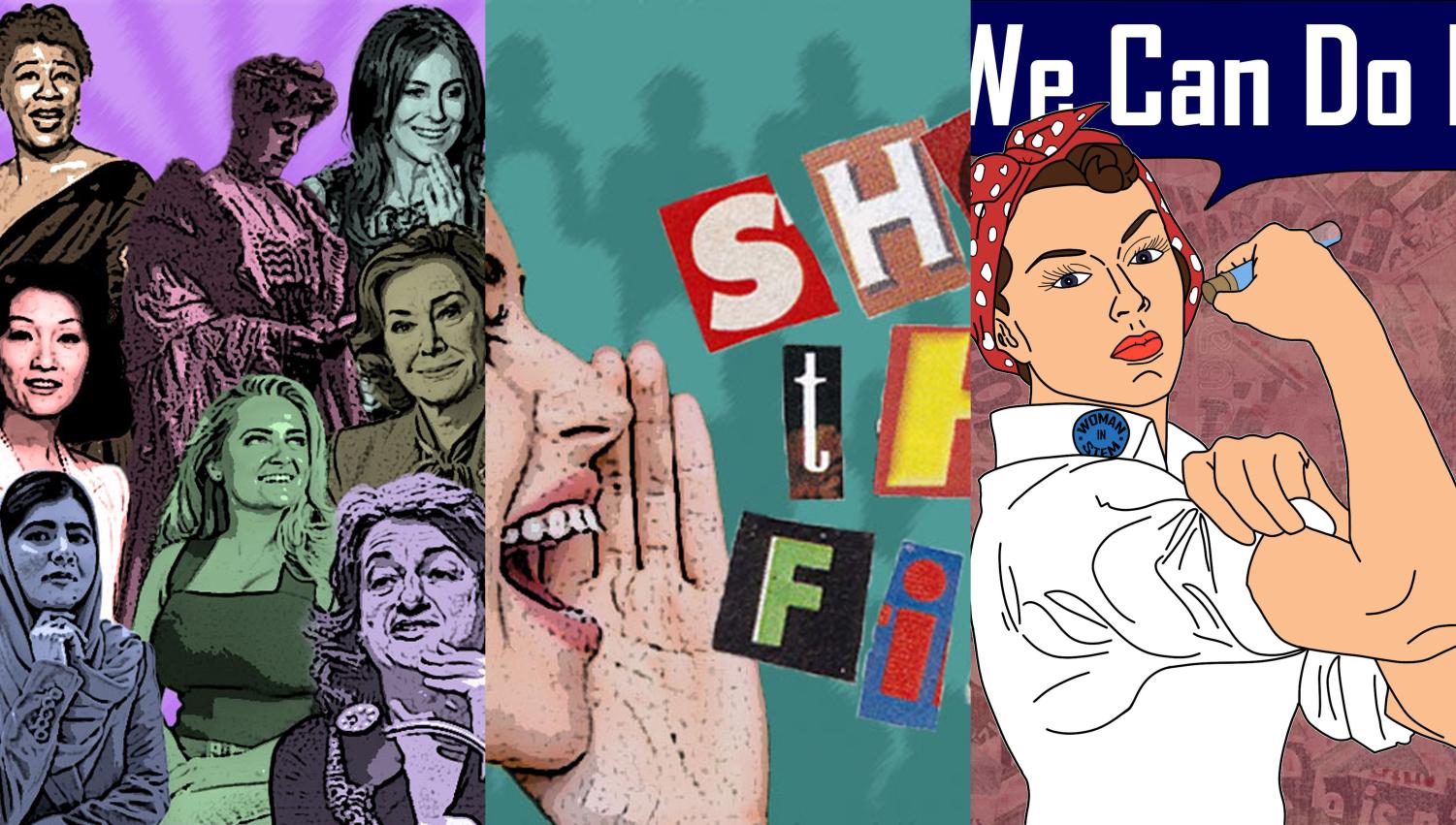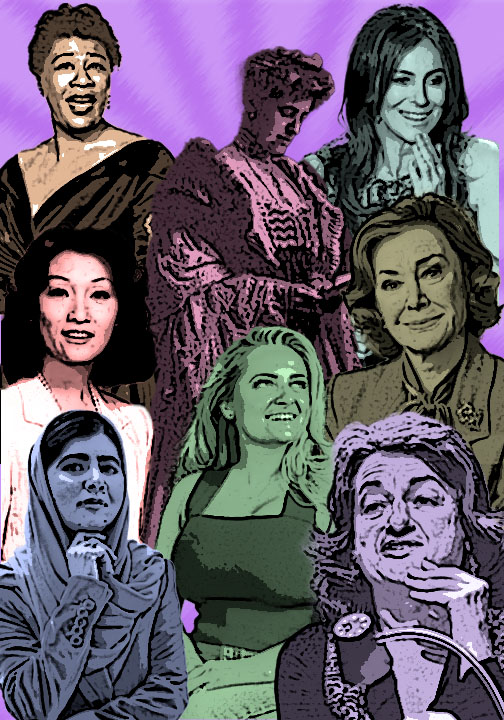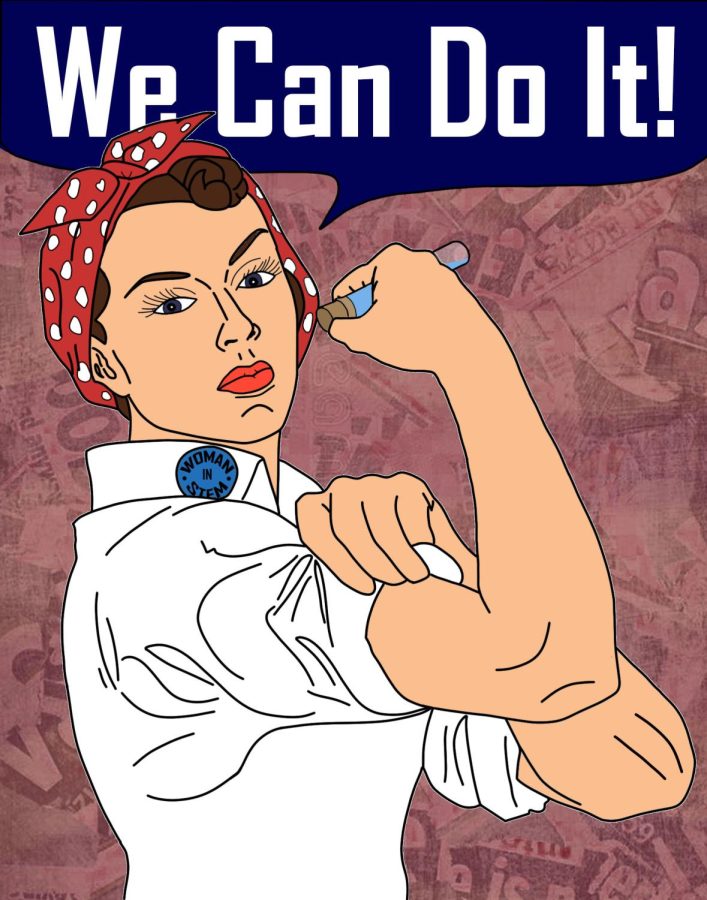Your donation will support the student journalists of Troy High School - MI. Your contribution will allow us to print our work, purchase equipment and cover our annual website hosting costs.
Women’s History Month 2023 Series
In the Chariot's first series, read about the history of Women's History Month, the Troy High School chapter of She's the First, and women in STEM and politics.
March 21, 2023
Women’s History is No Longer a Mystery
The Chariot discusses the history of Women’s History Month and the views of students at Troy High School.
Women’s History Month originates from many different places. Some claim it originated in Soviet countries as “Woman’s Day” in the early 20th century. Others claim it started with protests that occurred after the Triangle Shirtwaist factory fire in 1911. Still, more say it’s a combination of the two.
Soviet countries were the first to officially declare an annual “Woman’s Day,” with Vladimir Lenin making the decision. He recognized the importance that women had in the Russian Revolution. Specifically, a large feminist movement on March 8, 1917 was linked to the abdication of Czar Nicholas II and the revolution that brought Lenin’s political party into power. The term shifted from “Woman’s Day” to “Women’s Day,” and soon the movement spread to many Soviet countries around the world. Today, it is the second-biggest holiday in Russia.
Around the same time, on March 25, 1911, the Triangle Shirtwaist factory fire in New York City killed almost 150 workers, over 84% of which were young women. When investigated, it was discovered that, had the Triangle Waist Company installed more exits and unlocked the doors they already had, the workers might have been able to escape. This tragedy intensified the already-growing feminist movement.
While there is no definitive answer to the origin of this month, its history within the United States is more easily traceable.
In 1978, the Education Task Force of the Sonoma County Commission on the Status of Women, California, founded the first “Women’s History Week.” March 8, which many believe is based on the Soviet “Woman’s Day” because of their shared date, was the focal point of the week. Schools in the county put on events and held women speakers. An essay contest about the “Real Woman” was created, receiving hundreds of submissions. The week finished with a parade in a town square.
The concept of a Women’s History Week caught on quickly. Many counties, school districts and communities joined Sonoma County in celebrating women during this week. The effort eventually began to push for a nationwide week celebrating women’s history.
Two years after Sonoma County began the movement, President Jimmy Carter established “National Women’s History Week” as the week of March 8, 1980. In his statement, he pushed communities to take part in the week. He wrote, “I urge libraries, schools, and community organizations to focus their observances on the leaders who struggled for equality – – Susan B. Anthony, Sojourner Truth, Lucy Stone, Lucretia Mott, Elizabeth Cady Stanton, Harriet Tubman, and Alice Paul.”
Every year, Congress would reinstate National Women’s History Week. It wasn’t until March 1987 when a week became a month and all of March was declared National Women’s History Month.
This celebration is still relevant today. On February 28, 2023, President Joe Biden issued a statement in which he declared March 2023 as Women’s History Month. He spoke about women in activism specifically, stating, “Women — often women of color — have been on the frontlines, fighting for and securing equal rights and opportunity throughout our country’s history as abolitionists, civil rights leaders, suffragists, and labor activists. Women continue to lead as advocates for reproductive rights, champions of racial justice, and LGBTQI+ equality.”
At Troy High School, people are sharing their thoughts on Women’s History Month. When asked whether she thinks Women’s History Month is important, sophomore Grace Tennant said, “Absolutely. It’s a huge part of our culture. It’s important because women’s history has changed. It’s shaped world history. We didn’t always have women’s rights, and when we got them, it changed the world.”
Tennant continued, speaking on what the celebration of Women’s History Month means. “It means that we’ve gained enough to be recognized, but we’re not completely equal and we still need to celebrate that and understand it. There’s still more to go.”
Junior Aanya Shah said that the importance of Women’s History Month is centered on honoring women in the past. She said, “I feel that Women’s History Month is incredibly important to honor the women who have fought for our rights and all the liberties that we do have today.”
Despite its name, Women’s History Month isn’t just used to celebrate women’s history; it also amplifies advocacy for women’s rights worldwide. Tennant said, “The world is still changing. There are still places where women don’t have rights. It’s important to understand how we got them, what we still need to get, and how we can help people understand them.”
She’s the First: Empowering Women and Fighting for Education
The Troy High School branch of She’s the First fundraises and fights for women’s rights in education.
When She’s the First started in 2009, it was just a YouTube video. Now, the nonprofit organization has chapters in communities around the world.
One such chapter runs here at Troy High School. The club meets on alternating Fridays after school in room 141.
Junior Rebecca Austin, a club member, spoke on the focus of the larger organization, “She’s the First focuses on raising money so that they can invest it back in community-based organizations to support girls in their lives so that they can get a better education, get better sex education and have a better life.”
Each branch of She’s the First is affiliated with this larger organization. Junior Grace Cueny, a club member, spoke on the goal of Troy High School’s branch of She’s the First, “It’s empowering girls. It’s inspiring a conversation. It’s about fundraising and giving people opportunities.”
Both the smaller branches and the larger organization focus on raising money. When asked how they raise funds, Austin said, “The biggest way is bake sales. We always have a spring and winter bake sale and candy grams, which also ties into bake sales. That’s the biggest way we raise money.”
Cueny added on, saying, “We also raise money through working with local companies to donate some of their profits.”
Over the course of the 2021-2022 school year, Troy High School’s chapter of She’s the First raised $2,039, and $1,979 over the 2020-2021 school year. These earnings went to the global organization, which put the funds towards helping over 148,000 girls in developing countries have a strong education.
Fundraising isn’t the only thing that happens at their biweekly meetings; the club also hosts discussions on women’s equality and women’s rights. Recently, a club board member’s mother came in to speak at a meeting. She shared her experiences as a black woman in STEM. “[She] came in and talked to us about her life, her career and her recommendations,” said Cueny. “It was really informational.”
While Troy High School’s She’s the First branch doesn’t currently have anything planned for Women’s History Month, the members still recognize its prominence. Austin spoke on the importance of Women’s History Month, “I think it’s super important because [women] have contributed so much to literally everything. They were really ignored for a lot of history, so it’s important to remember them and give back.”
Cueny said that Women’s History Month is a time to “reflect, learn and educate yourself” on gender inequalities as a whole. “In general, gender inequality is a big thing. A lot of the time, people think that gender inequality just affects women, but I think that it affects everyone. We see this with gender roles, toxic masculinity and people feeling that they need to conform to femininity. I think it affects everyone and that it hinders everyone’s lives.”
She’s the First has come a long way from the YouTube video it started as in 2009. Now it’s a worldwide organization. Over the course of the past 10 years, they’ve reached over 226,500 girls in 42 countries. Every dollar raised by each chapter across the world, including the one at Troy High School, helps reach more girls and further the impact of their efforts.
To support She’s the First, attend club meetings and support their fundraising efforts. Visit shesthefirst.org, https://thsstf.wixsite.com/thsstf, and https://www.instagram.com/stf_troyhigh/ for more information.
Imbalance and Inequality: The Exclusion of Women in STEM and Politics
The gender inequalities within STEM and political careers extend beyond the workforce, leading back to Troy High School.
Women make up less than 30% of people working in science, technology, engineering and math, or STEM, careers. Globally, they hold only 26% of lawmaking positions despite making up about half of the world’s population. What is the reason for this shortage of women taking up careers in STEM and politics?
Junior Aanya Shah narrows in on one particular field to discuss the possible reasoning behind this inequality. “If you look at fields such as computer science, you see that less than 18% of computer science bachelor’s degrees are held by women. That narrative is shifting a lot more, but there is still so much of a stigma surrounding women who go into computer science just because it’s known to be such a male-dominated place and women can feel very intimidated.”
This imbalance isn’t just in the job market: many of Troy High School’s elective STEM classes also have fewer women than men. When asked whether this contrast was reflected in her classes, senior Shreya Srugaram said, “100% . In my AP Economics class, there’s literally only three other girls.”
Srugaram continued, commenting on the reason for this lack of representation. “In general, I haven’t seen a lot of women take AP Economics; I’ve seen them take regular economics. I think it’s because women tend to go into other careers.”
This observation is reflected in the real world. According to a culmination of studies collected by the United States Equal Employment Opportunity Commission, women are significantly less likely to go into STEM careers in comparison to their male counterparts, despite graduating with a bachelor’s degree or higher in a STEM major. Researchers found that women’s concerns were centered around gender bias, sexual harassment, lack of female role models, and unequal pay within STEM careers.
These inequalities are just as significant within politics. While women have been in the United States Congress since 1917, they currently only make up 27.9% of Congress. In fact, as recently as the 102nd Congress in 1991-1993, women made up only 7% of Congress. It wasn’t until 2013 that at least 100 women held congressional positions.
Despite this, women hold 44% of federal employment positions. They’re being hired, just not elected.
Ryan Werenka, the Advanced Placement Government and Politics teacher at Troy High School, reports on the status of women in politics at the local level in comparison to global involvement. “Troy, Oakland County, and the State of Michigan diverge from the 26% statistic. Women hold five of six seats on the Troy City Council. Women make up half of the Oakland County Commission, and women hold significant positions all throughout the State government.”
What happens when women are in these unequal positions? Srugaram commented on the role of women in STEM. “There’s a lot that women can bring to STEM. If they have the proper resources, I don’t see a reason that women can’t be just as successful. Looking at CEOs, you can see that, when there are women, more work is done. Not necessarily better work, but companies can go a lot further than they are now.”
Werenka agrees, elaborating on this same phenomenon within politics. “My perception of women in office is that they are more willing to take bold action towards addressing problems and are more willing to experiment with public policy solutions. Not to say that male officeholders couldn’t take bold approaches, but my perception is that male officeholders are more cautious and willing to abide by the status quo.”
Women may hold fewer of these positions, but their involvement is growing. Werenka sees this trend in politics. “We’ve seen historic numbers of women running for office over the past several election cycles and I expect that trend to continue. I think we’re going to see more women holding high governmental office in the coming years. It would not shock me to see a presidential matchup where both major parties nominate women.”
To support women in STEM, visit College Raptor. To support women in politics, visit Rutgers Center for American Women and Politics.




